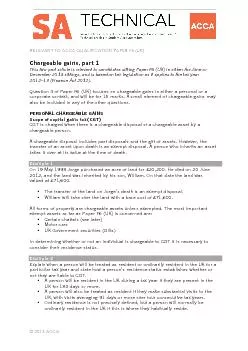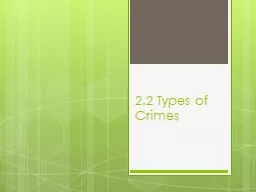PPT-Johnson Update Crimes of Violence, Career Offender, ACCA
Author : mitsue-stanley | Published Date : 2018-11-08
What remains of the residual clause The ACCAs nowvoid residual clause appears in the definition of a crime of violence under 4B12a 2 of the preAugust 1 2016
Presentation Embed Code
Download Presentation
Download Presentation The PPT/PDF document "Johnson Update Crimes of Violence, Care..." is the property of its rightful owner. Permission is granted to download and print the materials on this website for personal, non-commercial use only, and to display it on your personal computer provided you do not modify the materials and that you retain all copyright notices contained in the materials. By downloading content from our website, you accept the terms of this agreement.
Johnson Update Crimes of Violence, Career Offender, ACCA: Transcript
Download Rules Of Document
"Johnson Update Crimes of Violence, Career Offender, ACCA"The content belongs to its owner. You may download and print it for personal use, without modification, and keep all copyright notices. By downloading, you agree to these terms.
Related Documents














